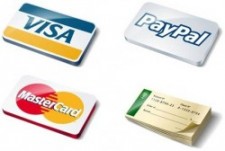
|
What is Proofreading?
Proofreading is the process by which written material is reviewed in order to detect errors, misspellings or mistakes in the material. While often confused with editing, proofreading does not involve major changes to text and is strictly concerned with errors in punctuation, spelling and grammar. As a result, proofreading is typically one of the last steps before the ultimate publication of a document, article or book. Spelling, grammar and punctuation errors can significantly affect the end user’s opinion of the value of the printed material and thus proofreading is a vitally important part of the overall publishing process.
Unsure if you need proofreading services or editing services? Simply ask us. We would be happy to take a look at your documents for free and let you know.
The History of Proofreading
The earliest forms of proofreading varied significantly from the proofreading methods used today. While punches and dies were used in ancient times to inscribe characters on seals and currency, the first conventional movable type printing devices were created independently in China in the 11th century and in Italy in the early 12th century, with the invention of modern movable type taking place in Strasburg, Germany, in 1439 A.D. by Johannes Gutenberg. A contract written in 1499 places responsibility for proofreading on the author. This demonstrates that even in the earliest days of printing, proofreading was considered an important element of the publishing process.
What is Proofreading Used For?
Proofreading can prevent significant errors from passing unchanged into the hands of the end user. In novels and other works of fiction, these errors may represent minor annoyances that can negatively affect the overall view of the work. In business matters, however, errors in advertising and promotional materials can create an unprofessional image of a company. Correcting mistakes after publication may not always be possible, so careful and accurate proofreading is essential.
What is Proofreading Like Today?
With spell check software and computer algorithms that check grammar and style, it might seem like proofreaders are not as useful as they once were. Nothing could be further from the truth, however, because as we become increasingly reliant on computer programs to catch our errors, competent proofreaders are needed to identify the types of errors computer programs frequently overlook. These errors include punctuation errors, misused words and missing words. Additionally, professional proofreaders have a far lower rate of false positives than software programs, as they can identify grammatical structures more accurately, relying on years of proofreading experience.
So, what is proofreading? In short, it is the final step in the publication process in which spelling, grammar and punctuation errors are identified and corrected. Accurate, competent proofreaders help ensure the readability and commercial appeal of printed materials and enhance the reading process for the end user, creating a more favorable impression of the printed copy overall.




